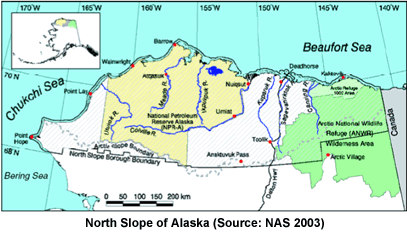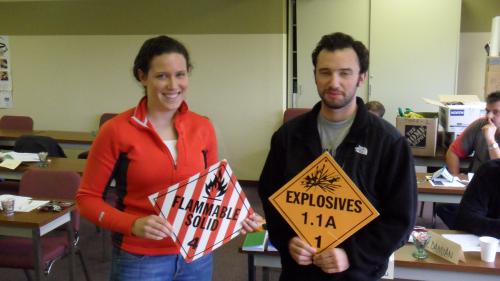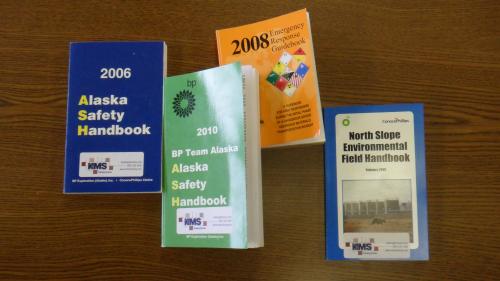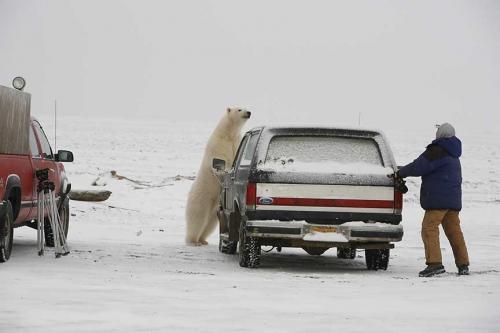A day spent between 8 am and 5 pm in a classroom may not sound like the most engaging way to spend one's first day in Alaska. And while that's exactly what happened - readers, have no fear - my Wednesday was by no means a lecture laden day in the doldrums. Elliot Upin, Kelsey Nyland, and yours truly were required to undergo the North Slope Training Co-operative (NSTC) "Unescorted North Slope" Safety Orientation. This course equips us to travel in otherwise restricted areas of the North Slope Borough, limited in access because of special environmental concerns and potential hazards due drilling infrastructure. The vast majority of our fellow students in the NSTC course were workers from Germany and across the US, preparing for six-week stints at Prudhoe Bay and surrounding oil fields.
The North Slope is one of 16 boroughs found in Alaska; a borough being what other states might call a country or parish. The "Slope" in the borough's name refers to the northern slope of the Brooks Mountain Range, the geographic boundary which constitutes the borough's southern border. To the north, the North Slope is bordered by the Arctic Ocean. The North Slope is home to both Prudhoe Bay and Barrow (the borough's largest burg) which we will be visiting in the upcoming weeks.

Our training today focused largely on the accident prevention in and around the oil field, and what to do in the event of particular emergencies. We were trained in the use of the Emergency Response Guidebook to identify hazardous materials by special placards posted on transport containers. We were also familiarized with the Alaska Safety Handbook (ASH), an all encompassing guide to mitigating and managing hazards in the field. Particular attention was paid to addressing hydrogen sulfide awareness. The toxic, flammable, and corrosive gas is a byproduct of organic matter decay, and, seeing as crude oil is organic matter, it is a real threat on the oil field. Apparently, the gas is only mildly less toxic than hydrogen cyanide, the gas used to execute criminals in some states. When you step in a marsh, or a swamp, or a peat bog bag home, and smell the rotten-egg odor bubbling up from the ground, this is hydrogen sulfide (albeit in small amounts). You begin to stop smelling the gas once it reaches concentrations of 100 parts per million, and that's when it begins to get dangerous. The procedure to handle hydrogen sulfide exposure? Get out!


Among the more colorful topics addressed in today's class involved encounters with wildlife. The principle by which petroleum companies operate is to avoid such encounters at all costs; human interaction can habituate animals, ultimately leading to their own harm. And of course, a polar bear caught unawares could deal a world of hurt to any human. They are, after all, the world's largest land carnivores. Even arctic foxes, a mammal not immediately perceived as a threat, can carry the rabies virus.

Josh


Comments